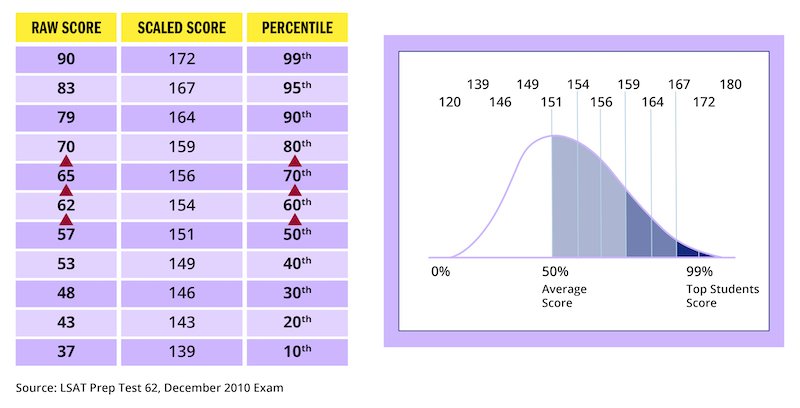The deprecation of the LSAT appears to continue as LSAC drops the analytical reasoning section
In 1998, a technical study from the Law School Admission Council looked at each of the three components of the LSAT—the analytical reasoning (sometimes called “logic games”), logical reasoning, and reading comprehension. The LSAT overall predicted first-year law school grade point average. But how did each of the individual components fare?
From the executive summary:
The major results of this paper indicate that each of the operational LSAT item types has a substantial correlation with FYA, and that each is needed to obtain the reported overall correlation because no two item types are perfectly correlated with each other. The item type with the greatest predictive validity was LR with a validity coefficient of 0.483. Even though RC with a validity coefficient of 0.430 had the next greatest value, AR with a validity coefficient of 0.340 makes the greater additional contribution to the validity coefficient of the entire test as it had a much lower correlation with LR than did RC. After adjusting for the amount of predictive validity accounted for by their correlations with LR, the remaining degree of correlation of AR with FYA was 0.124 whereas the corresponding value for RC was 0.107.
The results also verified that the interrelationships among the item types in the law school applicant pools were the same as those previously found for all test takers for a fixed LSAT form. The results verified that LR and RC remain very highly correlated (0.760), while AR is less correlated with LR or RC, but still strongly so, with correlations of 0.510 and 0.459, respectively.
The implications of this study are that all three item types have substantial correlations with FYA and should all remain as part of the LSAT to maintain the current level of overall predictive validity.
A few things are notable. The three sections are correlated with each other, but the analytical reasoning less so than the others. Nevertheless, the analytical reasoning section contributed significantly to the validity of the LSAT, as it was testing different skills that went into the overall predictive power of the LSAT.
Of course, none of the sections of the LSAT is a “real world” scenario for what lawyers “do,” nor does it simulate what a legal exam does. But it gets at different skills (pure logic, logic in reading, reading comprehension) that all have various applications in the first-year law school exam and the practice of law.
As I’ve been pointing out for years, however, the LSAT has been in a slow, steady decline. In 2015, I noted several problems—some from LSAC, some from the ABA, some from law schools, some from USNWR—that have resulted in the weakening the value of the LSAT. I followed up in 2017.
In 2019, LSAC entered into a consent decree on a challenge that the analytically reasoning section ran afoul of federal and state accommodations laws. Here’s what LSAC assured:
Additionally, LSAC has begun research and development into alternative ways to assess analytical reasoning skills, as part of a broader review of all question types to determine how the fundamental skills for success in law school can be reliably assessed in ways that offer improved accessibility for all test takers. Consistent with the parties' agreement, LSAC will complete this work within the next four years, which will enable all prospective law school students to take an exam administered by LSAC that does not have the current AR section but continues to assess analytical reasoning abilities.
This week, LSAC announced the conclusion of that project:
The council had four years to replace the logic games with a new analytical reasoning section under the settlement.
Because the analytical and logical reasoning sections test the same skills, it made sense to drop analytical reasoning altogether, council president Kellye Testy said in an interview Wednesday.
"This decision might help some, and it hurts none," Testy said. "The skills that we assess are the same and the scoring is the same."
In the Wednesday email to law school admissions officials, the council said removing analytical reasoning and replacing it with a second section of logical reasoning had “virtually no impact on overall scoring” based on a review of more than 218,000 exams. The revised format was also as effective as the current one in predicting first-year law school grades, the council said.
This is a remarkable conclusion for multiple reasons. First, LSAC opted not to find an “alternative,” as it originally attempted, but simply concluded it could fall back on the existing questions. Second, its conclusions run afoul of its own technical report from 25 years ago.
We shall see the LSAC new technical report, whenever it is released, as to how it the analytical reasoning section had “virtually no impact” on scoring and was “as effective” in predicting grades.
But from the existing LSAC literature, the decision to drop the analytical section will make the LSAT worse. It’s also not clear the many confounding variables that have made the LSAT worse over the years are diluting the “effectiveness” of the LSAT in its predictive power, which makes further modifications all the more marginal in terms of the effect it may have.
The hesitation I have in the title of this post, “appears,” is that I’m willing to see what LSAC puts out to explain how its 1998 study comports with its 2023 decision. But so far, I’m skeptical.
